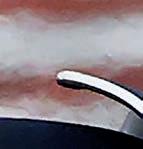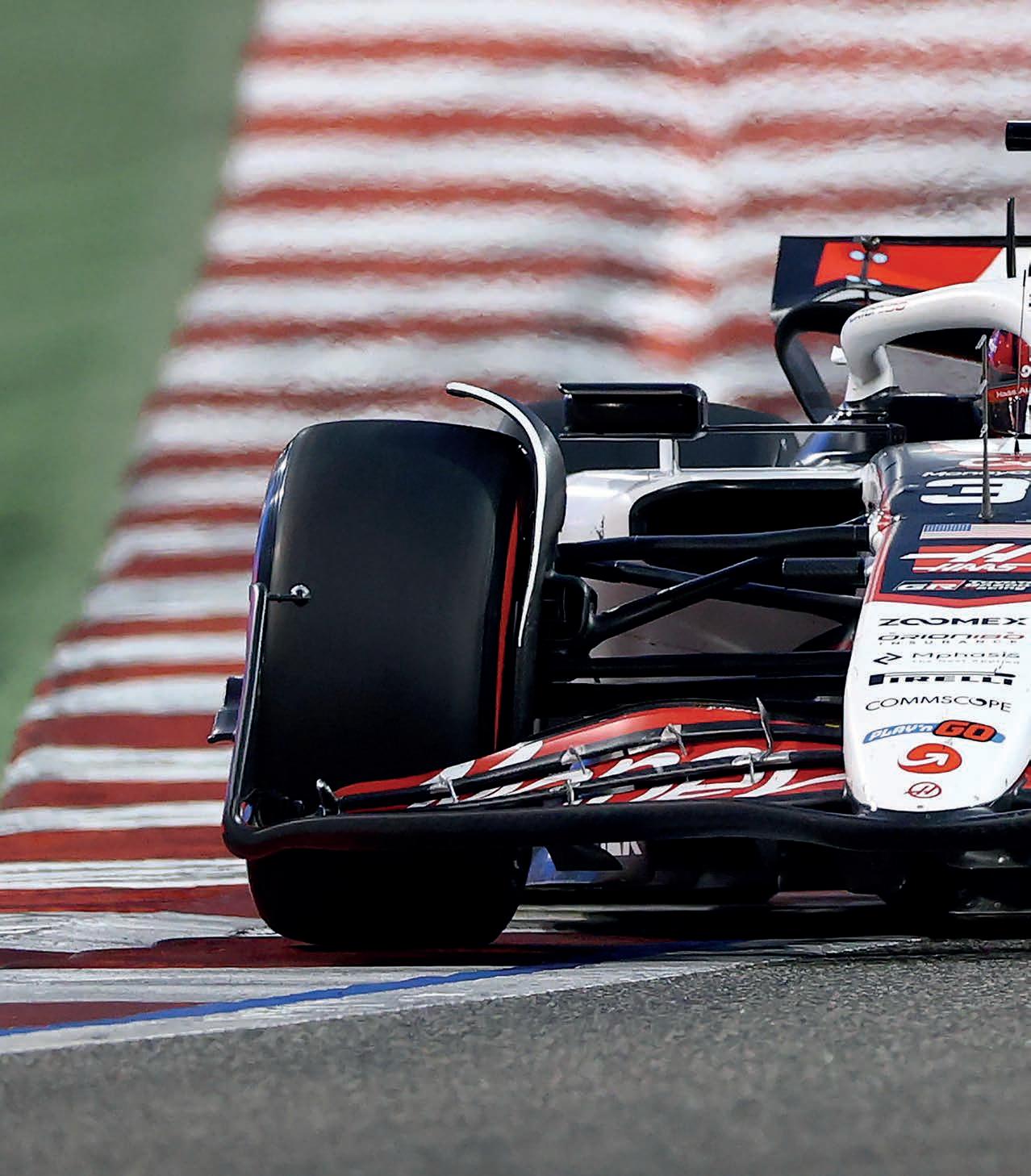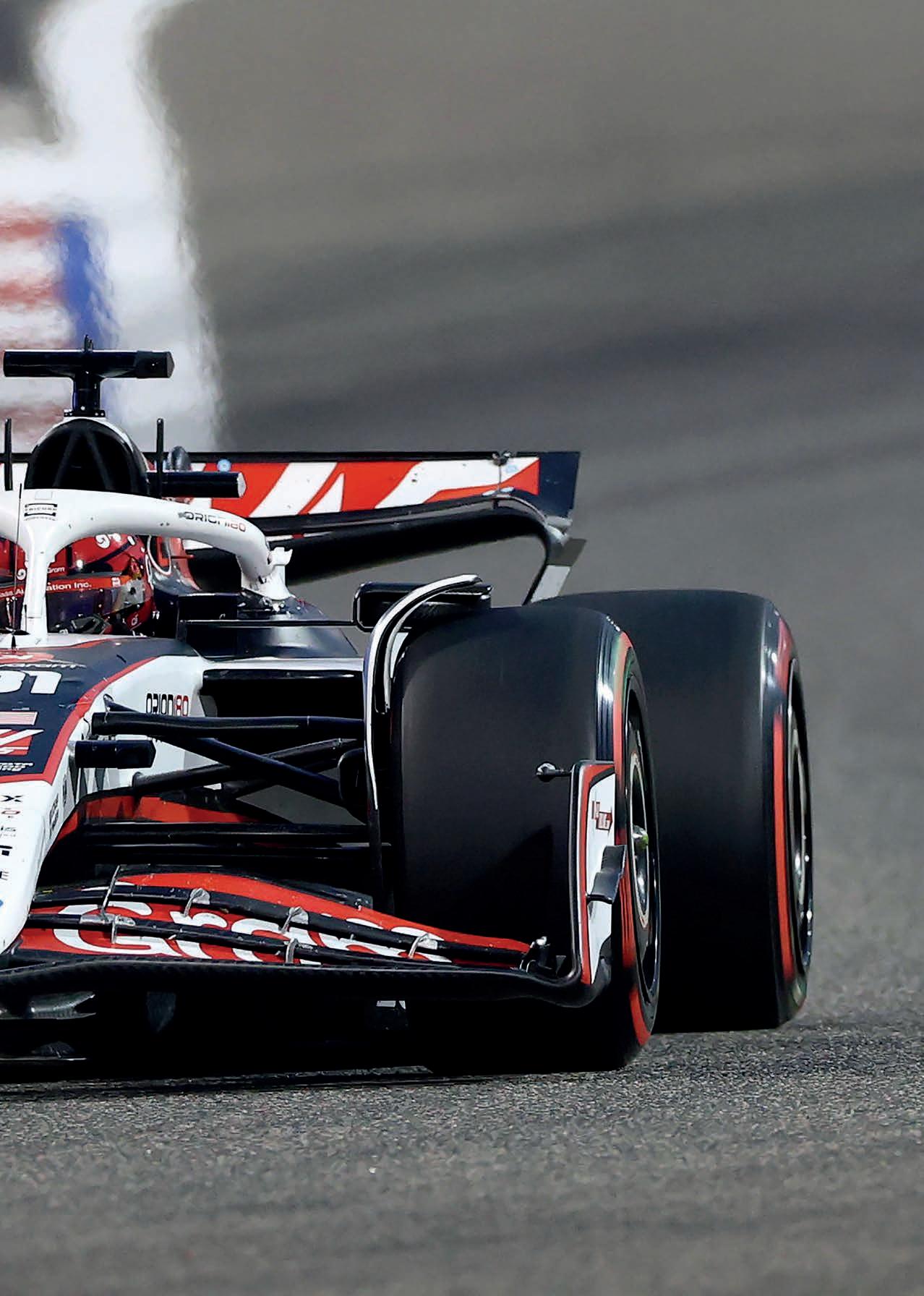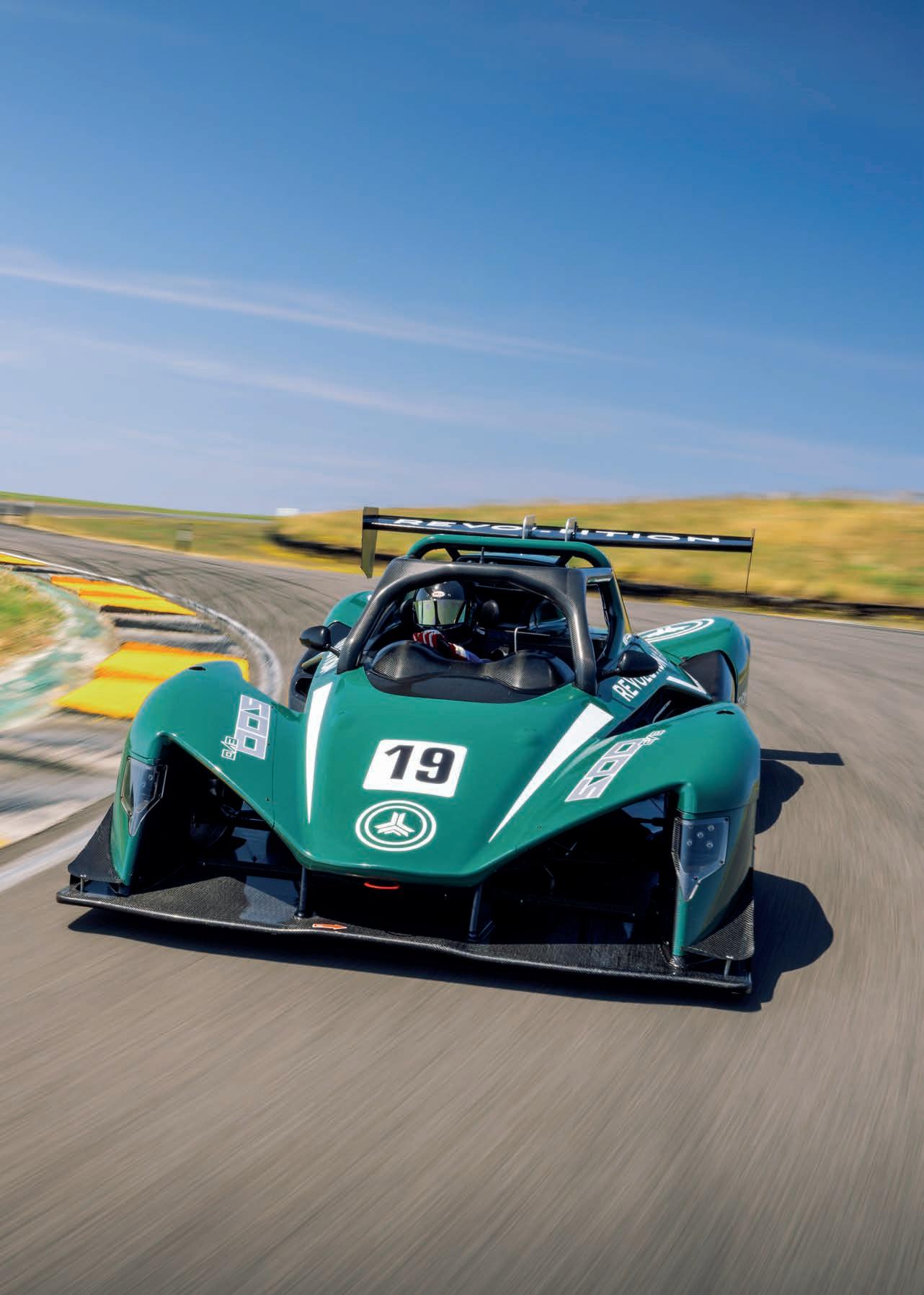Sustainable fuel replaces hybrids in UK’s premier tin-top series
Inside the world of modern motorsport technology US team recovering from shaky start to challenge for top ve









Sustainable fuel replaces hybrids in UK’s premier tin-top series
Inside the world of modern motorsport technology US team recovering from shaky start to challenge for top ve








Despite a rocky start to the 2025 season, the American-owned F1 team has put some early points on the board, but can it match its best ever result?
By DANIEL LLOYD
















Five races into its best season to date in Formula 1, the Haas team had scored 19 points. Five races into the current campaign and the American-owned squad had eclipsed that gure by one.
Of course, it is too early to dare predict whether Haas will match its personal best fth-place nish in the World Constructors’ Championship from 2018, but it is currently dicing with a resurgent Williams for that position, and the numbers look inviting. What is certain is that the Haas VF-25 has sprung from the gates quicker than its VF-24 predecessor did 12 months ago, when the team nished seventh.
If Haas does remain a top ve candidate as the 2025 season unfolds, it would be remarkable considering the disastrous opening race the team had in Australia, where erce oscillations of the oor in a particular sequence of corners made it by far the slowest car. Overcoming that issue quickly became one of the team’s priorities in the opening third of the campaign
The VF-25 is the rst Haas F1 car to be fully developed under the leadership of Ayao Komatsu, who replaced Guenther Steiner as team principal just before the 2024 season started. When that change happened, the

The Haas VF-25 is an evolution of last year’s car and is continuing its predecessor’s points scoring capability
Having caught the F1 bug watching ground-effect cars in the 1970s, Tombazis’ time in the sport came full circle when he helped put together the current technical regulations that arrived in 2022

The FIA’s single seater director had one goal as a child: Formula 1. After winning several world titles as an engineer, he is now trying to improve the sport
By CHRISTIAN MENATH

Nikolas Tombazis was born into a cradle of creating and achieving extraordinary things. His grandfather climbed mountains in the Himalayas in the 1920s and his father, Alexandros Tombazis, was one of the most famous architects in Greece. It seemed only logical, then, that young Nikolas might climb to the top of his chosen profession, too. The field he pursued was design, specifically Formula 1 cars. The FIA’s current single seater director spent many years of his life helping develop some of the fastest and most successful machines to have hit the track.
Tombazis contributed to winning 15 drivers’ and constructors’ titles at Benetton and Ferrari, rising through the ranks from junior aerodynamicist to chief aerodynamicist and then to chief designer.
‘My father let me do what I wanted,’ recalls the Greek. ‘I was a bit too cocky as a kid and didn’t want to just do what my father did.’ Growing up in Athens – a place better known for its rallying heritage than any association with Formula 1 – he set his sights on motorsport as a career path early on. When German architect friends of his parents invited him, aged 11, to the 1979 German Grand Prix at Hockenheim, the F1 spark was immediately ignited.
‘The first race was pretty special,’ he remembers. ‘I had my favourite drivers, my favourite teams and all of that. It was the time when the ground-effect cars were coming
‘I was really decent in maths and physics at school. I also liked cars, and I liked designing things, so all of these things pointed to that career [in F1] primarily’
Nikolas Tombazis – FIA single seater director

about and there were all the sketches of Giorgio Piola, with red arrows and green arrows [showing the cars’ different features]. I found all that aerodynamic stuff fascinating.
‘As a kid, I used to design my own cars. My friend used to do that as well and we would compare them. I was definitely what you would consider a hardcore fan.
‘I was really decent in maths and physics at school. I also liked cars, and I liked designing things, so all of these things pointed to that career primarily.’
At the age of 18, Tombazis left Greece to study in the UK. ‘I chose Cambridge [University] because it had a general engineering course. In that respect, I felt you learnt a bit of mechanics, a bit of aerodynamics, a bit of electronics and a bit of materials. You had a fairly wide range. I thought that would be useful for my subsequent career, and that it would give me a reasonable understanding of areas that were not my direct expertise.’
Tombazis wanted to go to America afterwards to do a PhD, but ended up staying in the UK to pursue his love for motorsport.
‘I was extremely passionate about Formula 1, but in those days jobs in the championship were rarer; the teams were much smaller. I knew that Imperial College London had a wind tunnel that some teams occasionally used back then, so I felt that would put me in a slightly better place. Also, my PhD in America would have taken about five years. At Imperial, I could do it in three and was closer to Formula 1, so I thought I’d go there.’
In 1992, Tombazis finished his doctorate in aerospace, aeronautical and astronautical engineering, having already secured a job offer from the Benetton Formula 1 team. ‘I remember having to rush to finish my PhD in order to start,’ he recalls.
The young engineer had responded to an advert in Autosport magazine. ‘That’s where it all used to happen in those days. I felt I had a rather outside chance of getting the job because it said previous experience was preferable, but fortunately, I think was in the right place at the right time.’
In 1992, Tombazis started at Benetton as a junior aerodynamicist. ‘The aerodynamics department back then was about eight people,’ he says. ‘There was my boss, who was Willem Toet. I was junior aerodynamicist, then there were two CAD designers and four model makers. That was it.’
In today’s F1 teams, the aerodynamics department alone consists of around 150 employees but, at the beginning of the 1990s, each person in the much smaller teams had a correspondingly large area of responsibility.
Cross Car (XC) aims to build an accessible pathway for youngsters into the varied worlds of off-road racing
By DIETER RENCKEN

Quiz any professional racing driver about starting off in motorsport, and the chances are 10 to one that karting will be referenced somewhere along the way. Indeed, every Formula 1 champion of the past 30-odd years first twirled the wheel of a kart in anger, before progressing up the ladder by way of F4, F3 and F2, or the equivalent formulae of the time. Saliently, single-seater series are not the only categories to benefit from karting. Touring car, GT and endurance racing grids all feature alumni who starred in this grass roots discipline before rising above their peers.
Clearly, karting provides a perfect grounding for youngsters wishing to pursue asphalt circuit-based racing. Hence why virtually every major motor racing centre features a kart facility of some sort, whether it’s indoor racing via arrive-and-drive offerings, or small-scale outdoor circuits that offer grand prix-type facilities. Factor in that such venues are, by definition, circuits without open traffic and it follows that five-year-old kids (or younger) are permitted to cut their racing teeth before even starting junior school.
What, though, about budding dirt artists, whose focus (or perhaps that of their parents) is aimed at loose surfaces and soft roads?

Consider this: most countries require competitors in such categories to hold a road licence, which means they are unlikely (or even able) to legally enter their chosen sport before the age of 16, at least. True, a number of rally stars started in karting before switching to dirt disciplines, but that is akin to a marathon runner training in track athletics for 10 years before making the switch.
It’s no coincidence that most rally stars grew up in rural areas, learning to drive (and slide) cars on dirt at a young age.
Enter Cross Car (XC for short), the equivalent of a dirt track kart designed to provide the thrills, and safe spills, of dirt

‘When you look at the top echelons of the sport, if we’re approaching the same sort of speeds, then we also need to be approaching the same safety standards’
Nigel Redwood, managing director at Revolution

With innovatively constructed carbon tubs, ingenious safety solutions and cars that lap as fast as LMP3s, Revolution is causing quite a stir on the national race and track day scene
By MIKE BRESLIN
Preparations at Sebring for the Type 61 Maserati in 1960 included Stirling Moss, who was the first to experience the car’s excellence

a
By KARL LUDVIGSEN
By the end of the 1950s, the front-engined racecar was dead, or at least dying. In Formula 1, mid-engined Coopers and Lotuses were winning, while sportscars were changing to engines behind their drivers and enjoying success. Despite this, it was still not quite clear whether a rear-mounted engine was essential in a well-designed sportscar. In the midst of this debate, a car appeared that challenged the emerging trend: the brilliant, and immortal, ‘Birdcage’ Maserati.
The creation of the Birdcage was evidence, if it were needed, of the astonishing resilience and creativity of the Officine Maserati in the late 1950s. This was the company that created the 250F grand prix car that helped Fangio to his 1954 and 1957 world championships, the beautiful and successful 300S sports racer and the incredible 450S V8 sports racer of 1957. A magnificent V12 engine had been created for the 250F, but this prodigality of
technical innovation came at a heavy price; by the end of the 1957 season, Maserati’s finances were in a parlous state.
In 1958, operating under government administration to protect its financial integrity, the Modenese firm devoted more attention to its 3.5-litre GT car to help restore its cash flow. Grand prix racing was out of the question, apart from token entries in Fangio’s final season. Its sports racers, like the 300S and the 200SI, continued to serve privateers, a category of competitor that had always received good value from Maserati, who (unlike Ferrari), was prepared to sell its first-string racecars to private stables. This was an important source of revenue for the company, especially the sale of spare parts.
In October 1958, Maserati’s chief engineer, Ing. Giulio Alfieri, began considering the creation of a new sports racer that could
compete in the international 2.0-litre class, then an important category and one in which Maserati, from its 1953 A6GCS onward, had always been competitive. He had radical ideas for the configuration of the car and, in November, was ready to start making the first chassis to see how well it would perform. When tests proved satisfactory, Alfieri and his colleagues completed the design.
Early in December, the finished concept was presented to Maserati’s chief, Omer Orsi, as a car that Maserati could build and sell to private owners. Orsi gave Alfieri the go ahead to build a prototype.
By May of 1959, the first 2.0-litre Type 60 Maserati was ready for testing in the hands of chief mechanic, Guerrino Bertocchi. On the public road from Modena towards Verona he found the new, as yet unpainted car very satisfactory. Its next test was at the Modena Autodromo on 19 May, with Stirling Moss at the wheel. Moss then tested